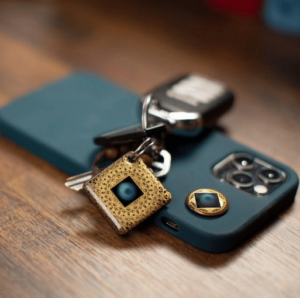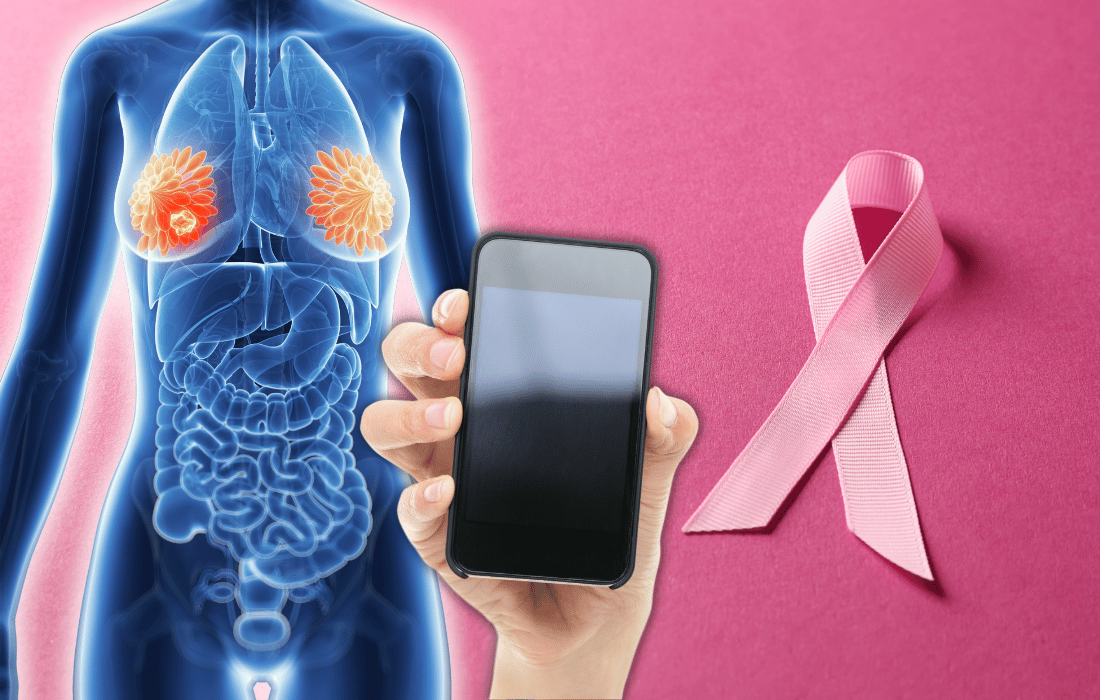Remember when the biggest fear about teenagers was that they’d crash the family car or sneak out at night? Today, the greater risk might be sitting in their back pocket, buzzing quietly while their brains and bodies soak in radiation.
Cell phones, our ever-faithful digital companions, emit microwave radiation. You know, the same type your kitchen microwave blasts to heat your leftovers, just at a lower power. However, “lower” doesn’t mean “harmless.” For teenagers, whose bodies are still developing, this could be a recipe for disaster. Let’s unpack the science, real-world stories, hidden risks, and how to protect your family proactively.
Breast Cancer and the Bra Phone Habit: A Tragic Warning
Cell phones have become so intertwined with daily life that we rarely stop to question where we carry them. However, when convenience leads to direct exposure to sensitive tissue, the risks can be far greater than most realize.
The “Convenient” Storage Choice With Deadly Consequences
It’s shockingly common: young women tucking their phones into their bras for “convenience.” What’s not so convenient? A growing list of case reports links this habit to breast cancer.
Research shows that breast tissue absorbs wireless microwave radiation. In 2011, the World Health Organization’s International Agency for Research on Cancer classified cell phone radiation as a “Group 2B possible carcinogen”. Today, many experts argue it deserves an even stronger classification.
Doctors and breast cancer surgeons, including those at Environmental Health Trust (EHT), now recommend keeping your phone out of your bra. Most women are unaware that their own cell phone manuals even warn against direct body contact.
Tiffany Frantz: A Real-Life Cautionary Tale
Tiffany Frantz was only 21 years old when she was diagnosed with invasive ductal carcinoma, an aggressive breast cancer, directly under the spot where she stored her cell phone for years. No genetic predisposition, no warning labels in plain sight; just a tragic outcome that ended her life at the age of 31.
Her mother, Traci Frantz, fought to spread awareness:
“I WISH there would have been a warning on the outside of the box for ALL of us to read. My daughter may not have had to fight for her life if it were!”
In a heartbreaking letter to city councils, Traci pointed out what many still don’t realize: phone manufacturers know about these risks—it’s hidden deep in your manual, written in fine print.
EMF and Teen Vulnerability: A Perfect Storm
Teenagers today are exposed to an unprecedented amount of electromagnetic radiation through daily device use. Understanding why their developing bodies are particularly vulnerable is essential to protecting their long-term health.
Why Teenagers Are at Higher Risk
Developing Tissues: Adolescent breast tissue, brain tissue, and hormone systems are still maturing, making them more vulnerable to radiation damage.
High Usage Rates: Teens spend an extraordinary amount of time on their phones, often in close body contact positions.
Long Exposure Durations: Streaming, gaming, texting—hours add up quickly, increasing cumulative exposure.
Dr. Devra Davis, Ph.D., MPH, toxicologist and founder of EHT, puts it bluntly: “There’s clear, compelling evidence that electromagnetic fields accelerate the growth of breast cancer cells.”
Radiofrequency (RF) radiation moves effortlessly through fat and fluid, and breast tissue is predominantly fat and fluid.
Early-Onset Breast Cancer on the Rise: An Unsettling Trend
With the explosion of modern technology use among young people, it’s no coincidence that early-onset breast cancer rates are climbing. Exploring these trends reveals critical clues about the unseen dangers that come with constant exposure to wireless devices.
The Alarming Statistics
Recent studies highlight troubling trends:
Breast cancer is now the most common cancer in women under 50 in the U.S. (JAMA Network Open, 2023).
Globally, breast cancer accounts for the largest number of deaths among younger people (BMJ Oncology, 2023).
In the U.S. alone, there were an estimated 47,550 cases of breast cancer among women under 50 in 2022.
Dr. Davis warns that while these statistics don’t “prove” causality, the trend is real. Coupled with what we know about EMFs’ ability to promote cancer cell growth, it’s no stretch to ask whether our tech addiction is quietly fueling a new public health crisis.
The Overlooked Connection Between Sleep and Cellular Health
While it might seem harmless to scroll through your phone before bed, research tells a different story. Screen exposure late at night can wreak havoc on the body’s natural production of melatonin, a powerful hormone that not only regulates sleep but also plays a key role in cancer prevention.
Melatonin Suppression: Exposure to blue light and electromagnetic fields (EMFs) from smartphones reduces melatonin levels, weakening the body’s ability to repair and protect itself during sleep.
Increased Cancer Risk: Melatonin appears to inhibit breast cancer cell growth, making its suppression particularly alarming for teenagers.
Interestingly, blind women, who naturally maintain high melatonin levels, experience about half the breast cancer risk compared to sighted women. This significant difference underscores just how important melatonin is in safeguarding long-term health.
Bottom line: encouraging tech-free evenings and proper nighttime routines isn’t just about better sleep—it could be a vital step toward cancer prevention for our teens.
The Sleep Disruption Nobody Talks About
Using smartphones before bed suppresses natural melatonin production, a hormone critical for sleep and for protecting against cancer development.
Interestingly, blind women, who produce higher levels of melatonin naturally, have about half the risk of developing breast cancer compared to sighted women. This isn’t a coincidence. Melatonin appears to inhibit breast cancer cell growth.
Bottom line: if your teenager is glued to their screen before bedtime, it’s a double whammy of suppressed melatonin and increased radiation exposure.
The FDA, the NTP Study, and the Politics of Denial
While many assume that federal agencies are always looking out for public health, the reality is far murkier. When groundbreaking studies challenge powerful industries, politics often take precedence over precaution.
When “Good Science” Gets Ignored
In 2016, the National Toxicology Program (NTP) released a bombshell: a $30 million study showing “clear evidence” that RF radiation causes cancer and DNA damage.
Dr. Otis Brawley, former chief medical officer for the American Cancer Society, called it a “paradigm shift” in a 2016 press release. Yet the FDA, which originally requested the study, chose to dismiss it when the results weren’t convenient.
Dr. Davis called the FDA’s dismissal “deeply flawed” and “hypocritical.” Meanwhile, millions continue to be exposed daily without adequate warnings.
Residential and Occupational EMF Exposure: More Evidence
Mounting evidence shows that electromagnetic fields aren’t just a theoretical risk—they’re a real-world threat. Everyday environments, from neighborhoods near power lines to high-EMF workplaces, can significantly increase breast cancer risks.
Residential Exposure: A Norwegian case-control study found that women living near high-voltage power lines had a 58% higher risk of developing breast cancer compared to those living farther away.
Occupational Exposure: Jobs involving regular proximity to strong magnetic fields, such as certain industrial, healthcare, and electrical positions, also show a concerning rise in breast cancer incidence.
These findings emphasize that EMF exposure isn’t confined to personal device use. It’s embedded into the very environments we live and work in.
The takeaway? Whether from environmental, occupational, or personal sources, EMF exposure is not benign, and cumulative exposure matters. Every step we take to reduce it counts, especially when it comes to safeguarding vulnerable populations like teens.
Practical Steps to Protect Teens Today
Keep Phones Off the Body: No storing phones in bras, pockets, or waistbands.
Use Airplane Mode: Especially when carrying phones on the body.
Prefer Wired Connections: Choose wired earbuds and Ethernet over Bluetooth and Wi-Fi when possible.
Create a Tech-Free Bedroom: No phones by the bed; use traditional alarm clocks.
Educate Teens Through Empowerment: Offer facts and real-world examples without fearmongering.
How Aires Can Help Safeguard Teen Health

In addition to changing behaviors, Aires offers scientifically validated EMF protection technology designed to mitigate the biological effects of electromagnetic radiation.
Products like the Aires One and Zone Max use patented microprocessor technologies to harmonize EMF fields, rendering them less harmful to biological tissue.
Research shows Aires devices support healthy heart rate variability (HRV) and cellular health, an especially critical intervention for vulnerable groups like teenagers. Aires Tech’s commitment to peer-reviewed research and real-world testing positions them as a trusted ally in the battle against hidden radiation exposure.
Families serious about comprehensive EMF protection should strongly consider integrating Aires Tech solutions alongside lifestyle changes.
Final Thoughts: Why Awareness and Action Are Critical Now
This isn’t about fear-mongering. It’s about informed choice. Cell phones are incredible tools—but they were never meant to be radiation-emitting teddy bears we cuddle 24/7.
If there’s even a chance that cell phone radiation is contributing to the rise in early-onset breast cancer, shouldn’t we act now, especially for our kids?
Let’s make pockets and bras #NoPhoneZones. Let’s create a generation that uses technology wisely, supported by proactive habits and innovative protections like those offered by Aires Tech.
Let’s act before a “paradigm shift” becomes a preventable tragedy.








